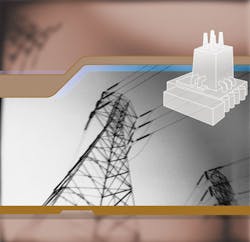As wireless sensor networks (WSNs) begin finding more applications in industrial environments, one potential drawback is the need for a battery on each wireless node. This means that as the number of wireless devices grows, battery replacement could turn into a costly and time-consuming problem.
That’s one reason that energy harvesting technology—which could potentially eliminate the need for batteries—was grabbing a good deal of attention at the recent Sensors Expo & Conference June 8-10 in Rosemont, Ill., near Chicago’s O’Hare International Airport. For the first time this year, the Sensors Expo included an Energy Harvesting Pavilion on the show floor, sponsored by a half dozen companies that are active in the field. An Application Showcase Theater at the show was dominated by presentations on energy harvesting and related battery and energy storage topics.
“Industrial users are telling the process automation companies that they’ll be happy to try out a few [wireless sensors], but that if they want to see tens of thousands of them deployed across their plants, they’re going to have to solve the battery problem,” said Roy Freeland, chief executive at Perpetuum Ltd. (www.perpetuum.com), a Southampton, England, provider of vibration energy-harvesting devices. “Wireless sensing is not going to take off until this problem is solved,” declared Freeland, whose company was one of several vendors introducing new energy harvesting products at the show.
Capture and store
Energy harvesting aims to capture and store ambient energy for use in powering wireless devices, potentially eliminating the need for batteries. Energy sources include vibration, thermal and solar, among others. In the industrial WSN space, vendors have typically focused on energy harvesting devices based on piezoelectric or electromagnetic techniques that can capture the mechanical vibration of motors and other industrial equipment. And after several years of development, proponents of the technology contend that it is now ready for widespread deployment.
Jerry Ruddle, executive vice president and general manager at Advanced Cerametrics Inc. (www.advancedcerametrics.com), a Lambertville. N.J., energy harvesting company, cited three reasons why the technology is real today.
First, he said, Advanced Cerametrics’ new Harvestor-III—a third generation product introduced at Sensor Expo—is based on piezoelectric fiber composite material that can provide 10s of milliwatts of output, vs. the microwatts or single-digit milliwatts typical of conventional piezoelectric-based devices. Second, Ruddle said, the market has become more educated in recent years that energy harvesting can fully replace and/or augment battery power for wireless applications. A third reason is that wireless systems designers are lowering the power requirements of wireless systems, while end-users are also “getting smarter about their duty cycles” to reduce power needs, according to Ruddle. This makes energy harvesting more viable, he said.
Air power
While vibration energy harvesting may be most common for industrial applications, a different approach was being shown by Pittsburgh-based Powercast Corp. (www.powercastco.com). At its Sensors Expo show booth, the company was demonstrating its Powercaster transmitter, which was beaming a radio frequency (RF) signal toward the company’s Powerharvester receivers mounted in other nearby booths. The receivers were harvesting energy from the RF field and converting it to DC power sufficient to operate low-power sensor devices. Harry Ostaffe, Powercast director of marketing, said the company has so far deployed the technology in custom projects for military and industrial clients, with typical transmission distances “in the 10s of feet” using a three-watt transmitter.
Still other vendors at the show were highlighting thin-film, rechargeable storage devices, or batteries, designed to replace conventional batteries or supercapacitors for use in energy harvesting applications. Cymbet Corp. (www.cymbet.com), Elk River, Minn., was demonstrating its EnerChip thin-film battery technology—housed in surface mount technology packaging—to store energy collected from eight different types of energy harvesting solutions, including vibration, thermal, RF, flow and solar-based systems.
Infinite Power Solutions Inc. (www.InfinitePowerSolutions.com), meanwhile, based in Littleton, Colo., used the Sensors Expo show to introduce its new Thinergy family of solid-state, rechargeable, micro-energy cell (MEC) products. When recharged over their lifetime, these thin-film batteries “provide tens of Watt-hours of energy, equivalent to or more than traditional primary cells that are hundreds of times larger in total volume. Combined with ambient energy harvesting, Thinergy MECs deliver perpetual power to wireless sensor nodes and other micro-systems for more than a decade of maintenance-free operation,” the company said.
Advanced Cerametrics Inc.
www.advancedcerametrics.com
Cymbet Corp.
www.cymbet.com
Infinite Power Solutions Inc.
www.InfinitePowerSolutions.com
Perpetuum Ltd.
www.perpetuum.com
Powercast Corp.
www.powercastco.com
About the Author
Wes Iversen
Managing Editor

Leaders relevant to this article:
